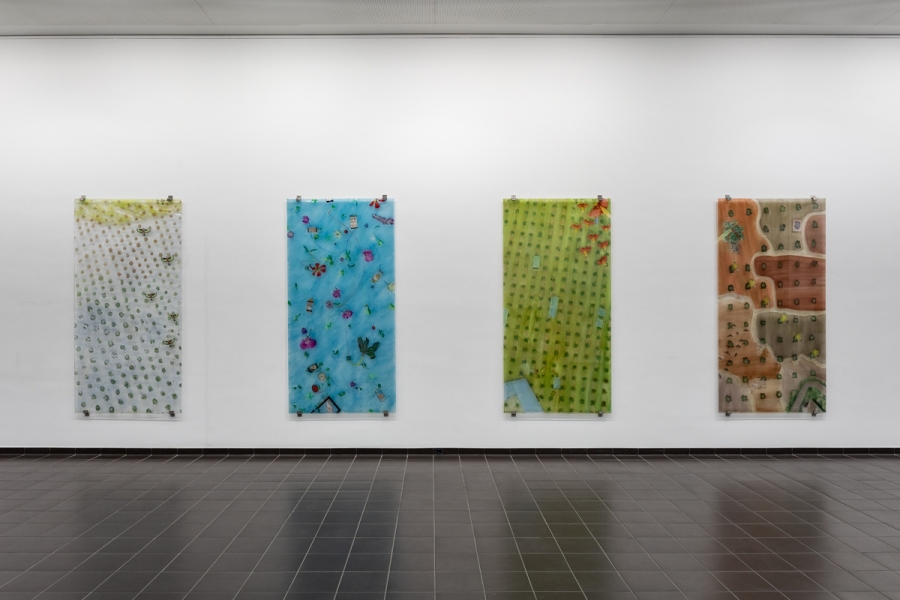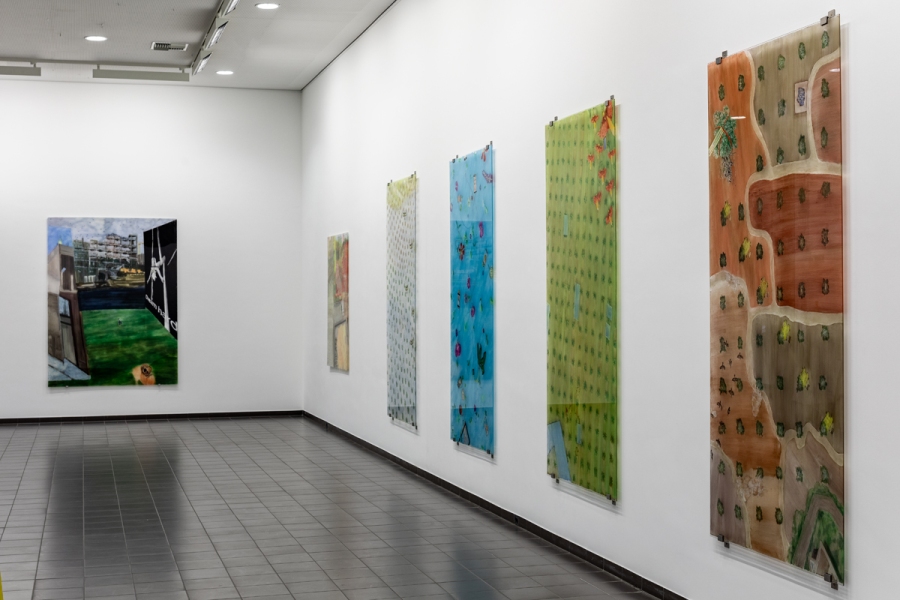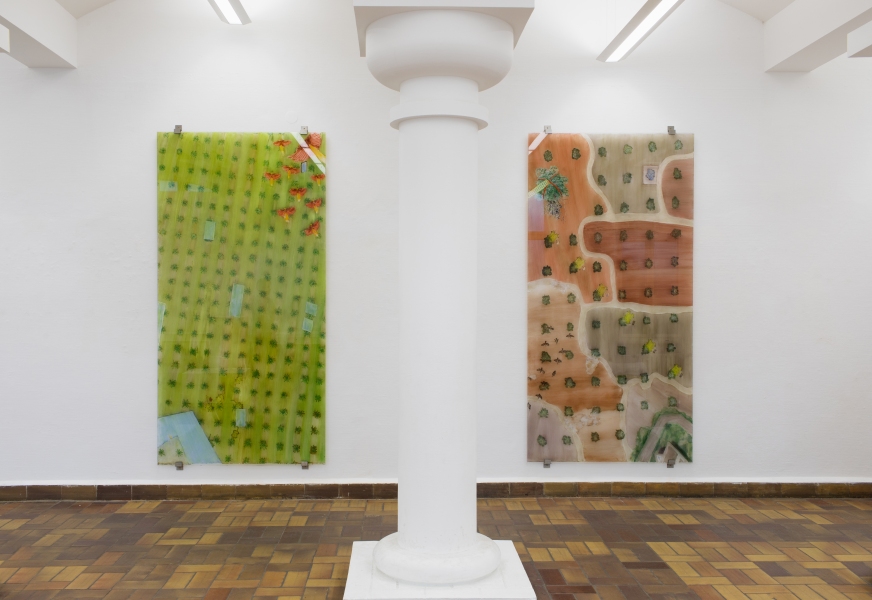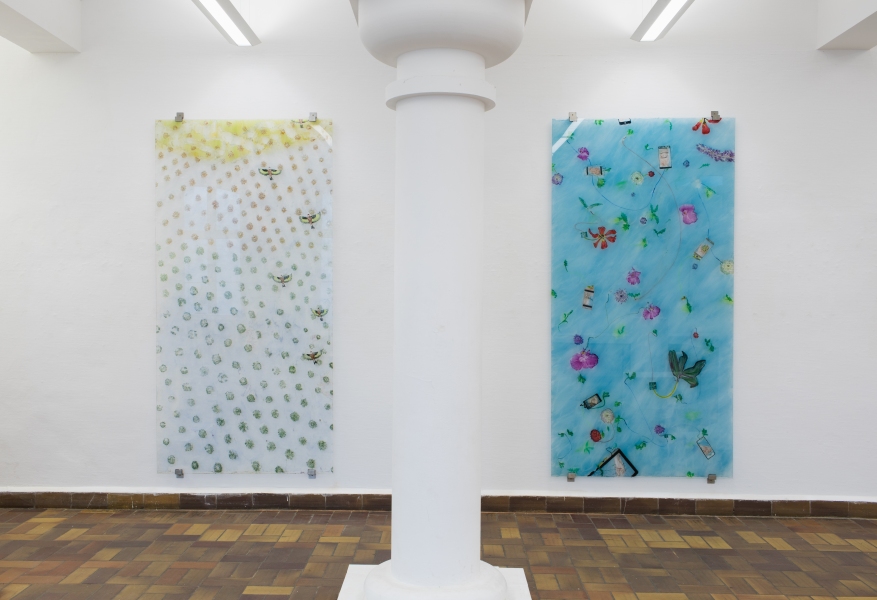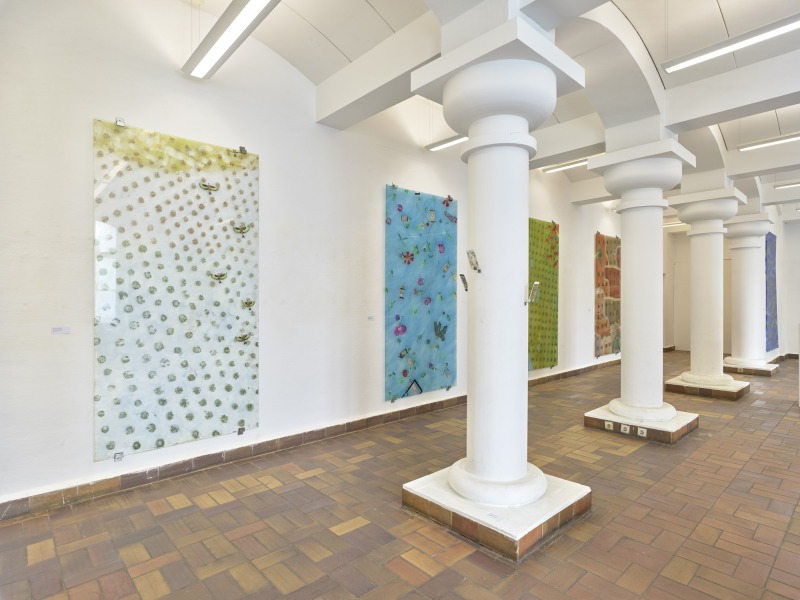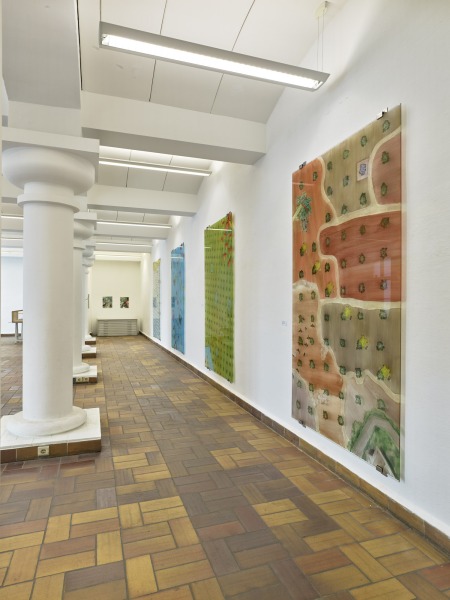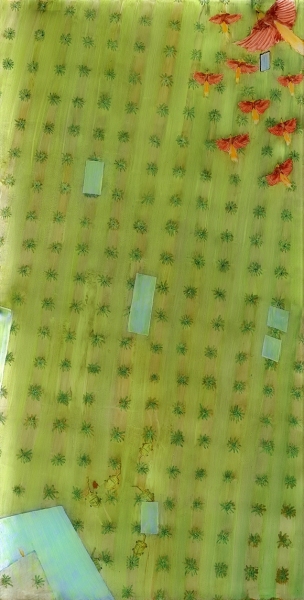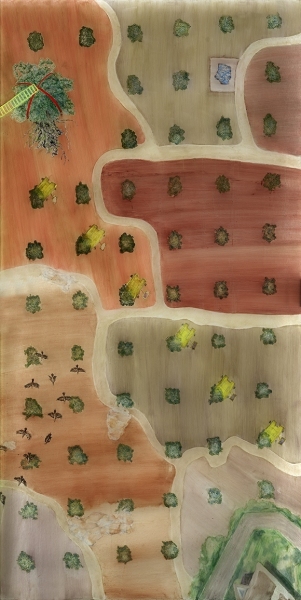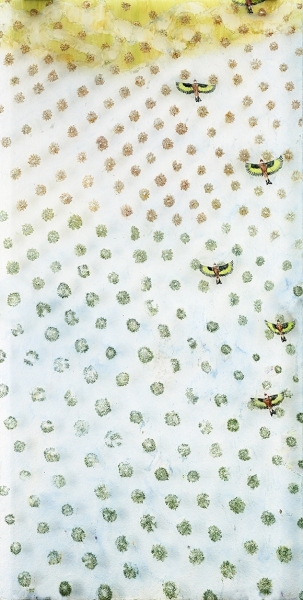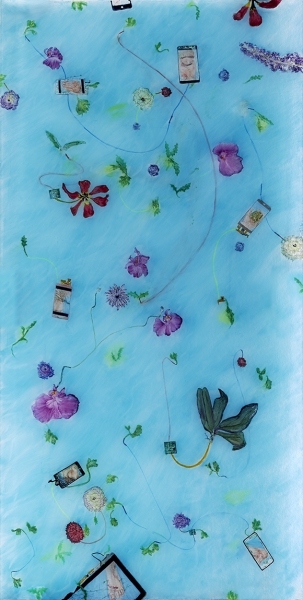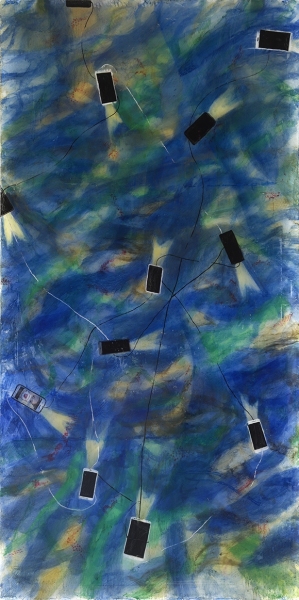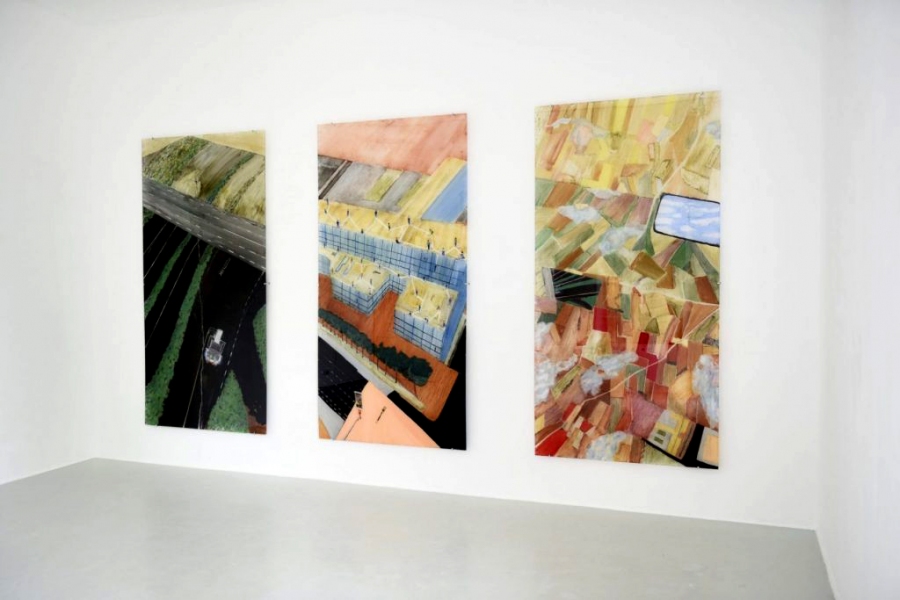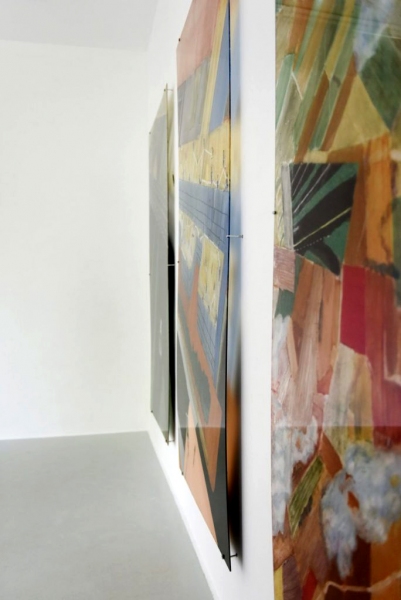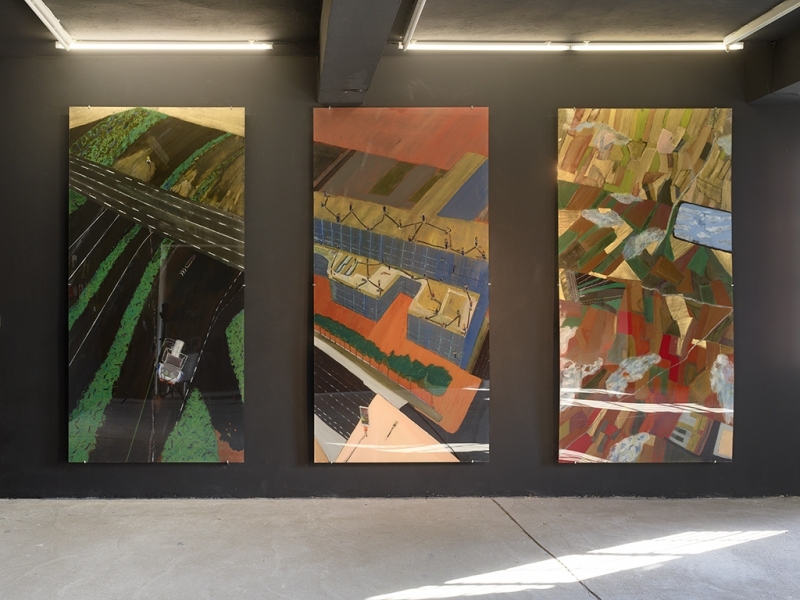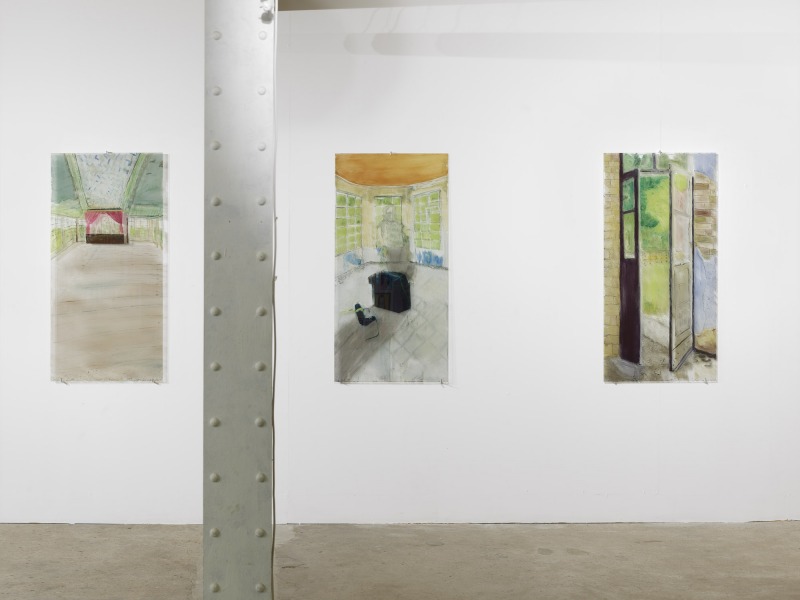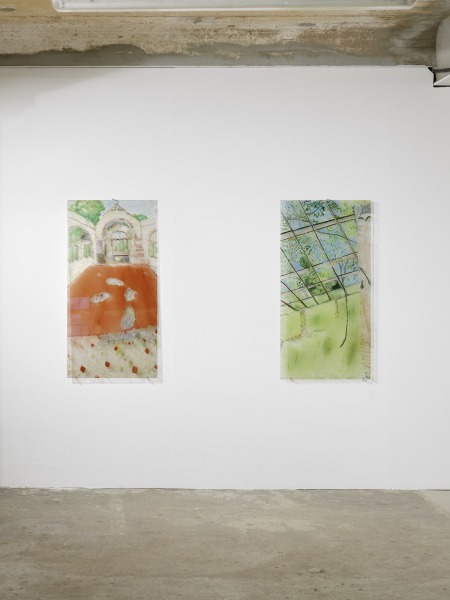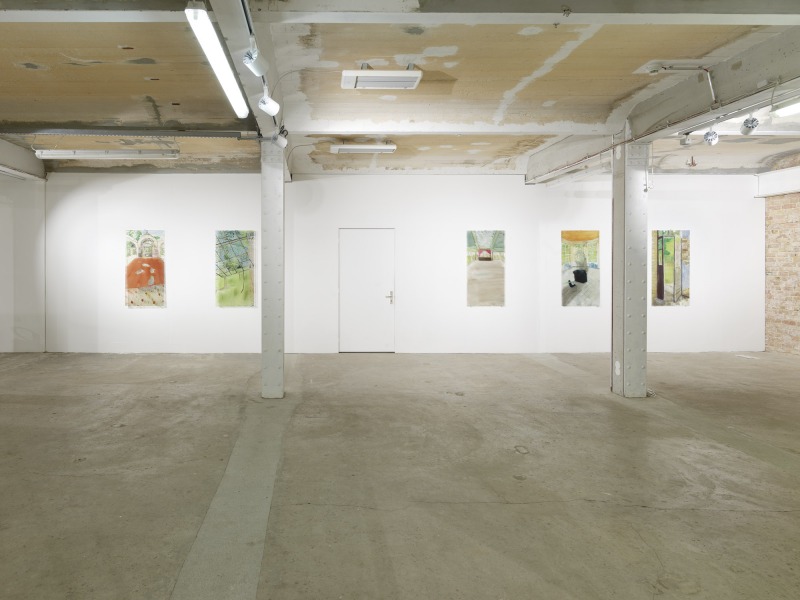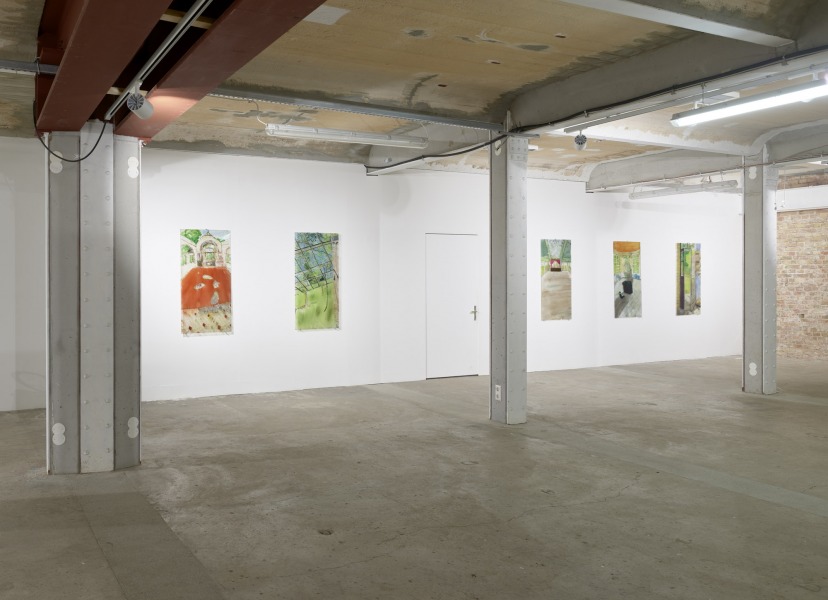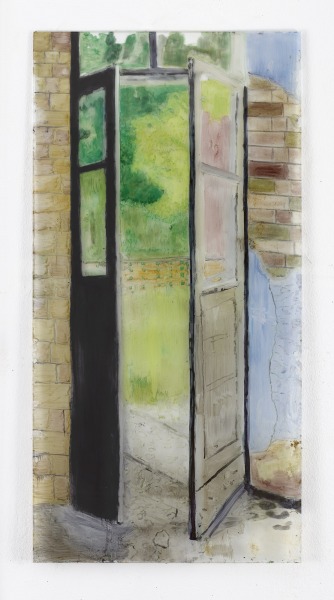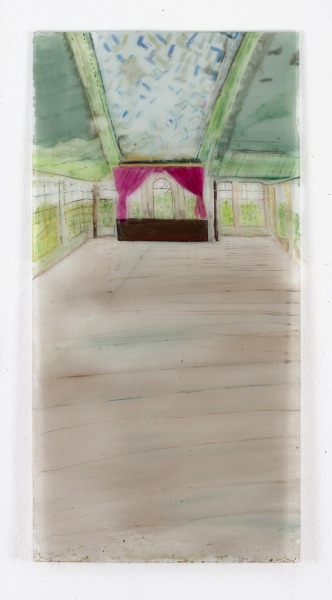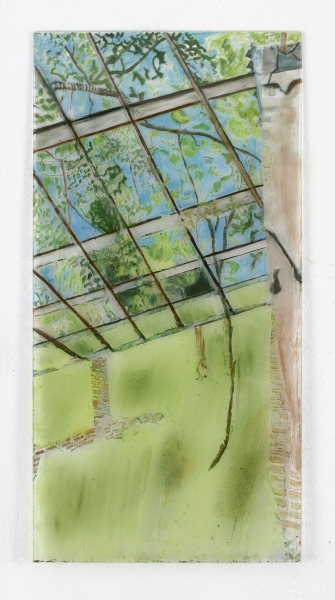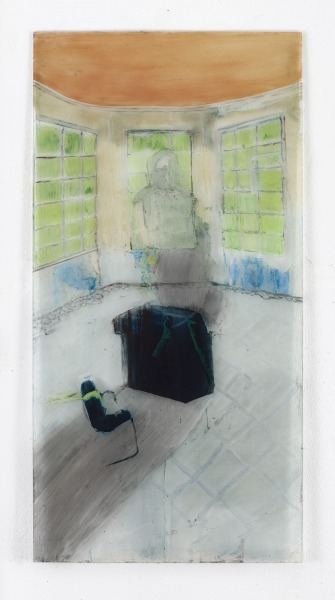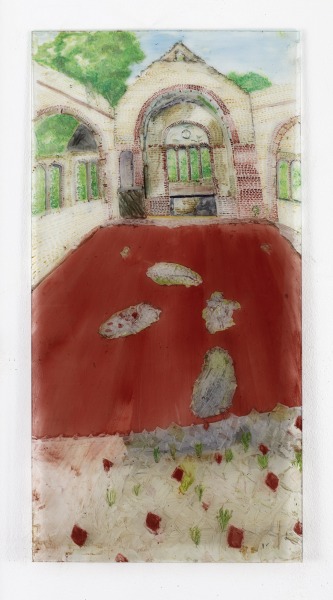Paradise lost
In the art collection of Banco Santander’s financial city, there is a collection of thousand-year-old olive trees re-planted in straight lines from their original environment in Greece, Italy and Spain.
In Paradise Lost, I research how the perspective of satellites and digital simulation programmes is related to the mastery of the body, territory and nature.
The series was painted from nature sketches and satellite images showing aerial views of contemporary landscape-defining monocultures such as olive trees, fir trees and oil palms. From a distance, it appears to be wallpaper; as you approach, each tree in the paintings is a single and unrepeatable variation. The last painting in the series, Spring, speculates on a new relationship between nature and technology.
You live in interesting Times
On the island Hallig Nordstrandischmoor in the North Sea, which will soon be flooded, grows a type of grass that has adapted to the salty soil. The picture is painted by means of glazes, the vegetation and the water overlap. The interconnected mobile phones, in which the viewers can see themselves reflected, point to a time when technology has overcome us. A self-portrait of the artist wearing a mask appears on a display
Nuevos Ministerios is a government building complex in Madrid, built after El Escorial and in use during different political systems -the Republic, the dictatorship, the parliamentary monarchy. How is political change reflected in the architecture?
Through retouching, the digital image loses objectivity: the human hand reaches back into the machine. The triptych of retouching transforms the image of Nuevos Ministerios from analogue to digital, from digital back to analogue.
First, I made drawings of Nuevos Ministerios and the overpass Eduardo Dato from the 8th floor of the building in front. Then, I converted these drawings in aerial view into a digital 3D model. Based on this model, I painted the triptych behind acrylic panels with the enlarged proportions of a mobile phone display. Each view moves further away from ground level on each panel, and different perspectives are shown through mobile phones or rear-view mirrors. What remains is an open image in flux that must be reinterpreted by the audience.
Heilstätte Grabowsee was a pulmonary sanatorium on Lake Grabow in Brandenburg. It was founded in 1896 by the German Red Cross and served as a military hospital for the Soviet army after the Second World War. Afterwards it was used as a film set and run by an association.
The series of paintings Heilstätte Grabowsee deals with the decay of this building complex, whose further use is unclear today.
I painted sketches with watercolour on site and took photographs. On them, one can see how the interior space merges with the exterior space through the growing vegetation. Based on this, I painted the pictures behind glass with oil and pigments in the studio.
The paintings were exhibited at a distance from the wall in the Kühlhaus Berlin. The coloured shadow on the wall gives them a three-dimensional character.
Diese Arbeit wurde von Stiftung Kunstfonds Neustart Kultur gefördert


